If you’re new to the shooting sports, hunting or firearm ownership, there can be a lot to learn, especially when it comes to all the terminology whether we’re talking parts of a firearm, ammunition or types of shooting sports.
To help you begin building your basic firearms knowledge, we defined the following common terms, including parts of the firearm and some associated elements.
Action
The part of the firearm that works to feed a round into the chamber, facilitates firing the round, and ejects the spent shell or cartridge after the round is fired. There are a number of different actions, especially when it comes to long guns such as rifles or shotguns. These include lever-actions, semi-autos, single shots and bolt-actions.
Backstrap
This is the back part of the grip of a handgun.
Barrel
The barrel is the metal tube-like part of the gun, either rifled or smooth, the bullet travels through when first fired.
Bolt-Action
A rifle or shotgun that has a protruding handle (bolt) that the shooter uses to feed and lock a cartridge into the chamber so the gun can be fired. It is then used to eject and remove the spent casing and load another.
Bore
Inside of the barrel and often affects the size of bullet or cartridge that can be fired from the gun.
Butt
The rear portion of the stock on a rifle or shotgun or the bottom part of a pistol grip.
Butt Plate
A covering that protects the butt of a firearm. It can be made of rubber, plastic, metal or other materials.
Caliber
This is the diameter of a bullet fired from a barrel with rifling such as a rifle or handgun. It must match the diameter of the interior of the barrel. It is typically expressed in hundreds of an inch.
Choke
This is a tightening, or more commonly constriction, of a shotgun’s muzzle that determines how tightly or loosely the shot fired from a shotshell will disperse after being fired. Common choke constrictions from loosest to tightest is cylinder, improved cylinder, modified, full and extra full.
Comb
The part of a rifle or shotgun’s stock where the shooter’s check rests as they aim and prepare to fire.
Cylinder
The drum-shaped part of a revolver where cartridges are loaded. The cylinder rotates as each round is fired or as the revolver is cocked.
Forearm or Forend
The part of the stock located under a firearm’s barrel where the shooter’s forward hand holds the firearm steady.
Gauge
Like caliber, this is how the size of the barrel’s bore is expressed. The smaller the number, the larger the bore (i.e., a 10-gauge shotgun’s bore is twice the size in diameter of a 20-gauge’s bore).
Note
Originally, gauge was measured by determining the number of lead balls that fit in the diameter of the bore and the portion of a pound it weighed.
Grip
The part of the gun’s handle held by the shooter’s hand on a handgun as well as the part where the rear hand grips on the narrow part of the stock on a rifle or shotgun.
Hammer
The part of the firearm that slams forward upon depression of the trigger, striking the cartridge’s primer or a firing pin.
Lever-Action
A type of rifle whereby a lever is worked to feed new cartridges and expel fired shells from the chamber.
Magazine or Mag
Can be either a permanent part of the firearm, but most often is detachable, and holds the cartridges to be fired. Magazines are typically spring loaded to feed a new cartridge into the chamber after the previous round has been fired and is being unloaded.
Magazine Well
For a detachable magazine, this is the opening in a firearm where the magazine is inserted.
Muzzle
A gun barrel’s open end where a bullet exits when fired.
Pump-Action
Most often found on a modern shotgun more so than rifles. It is an action type that feeds new cartridges and expels spent ones via a slide located on the forend of the firearm.
Revolver
This is a pistol with a rotating cylinder that holds cartridges and rotates to line up each chamber with a barrel and firing pin.
Rifling
Refers to spiral grooves cut into a gun’s bore that cause the bullet to spin for better downrange accuracy when it is fired.
Safety
Designed to prevent the trigger from being pulled or the gun fired when not intended.
Note
Even with a safety engaged, the finger should stay off the trigger, outside the trigger guard, until the sights are on the target and the person is ready to shoot.
Shotgun
A long gun typically with a smooth-bored barrel that is held to the shoulder to be fired and holds shotshells instead of cartridges in order to send multiple projectiles (shot) downrange. For this reason, shotguns do not possess the long-range capabilities of a rifle.
Single Shot
A type of gun where only a single cartridge or shotshell can be loaded and fired at a time and then manually removed after firing.
Sling
A strap often attached to a rifle or shotgun so the firearm can be slung over a person’s shoulder, making it easier to carry.
Sling Swivel
These provide the spot — on or near the forend and on the stock — where the sling attaches.
Stock
The part of the firearm the action and barrel fit into, which the shooter holds and/or shoulders in order to shoot the firearm. Most often, firearms that have a stock are long guns (rifles or shotguns), but a pistol could have a wooden stock and grip (these are usually for hunting, often used by hunters with physical restrictions).
Trigger
The manually operated part of the firearm that when squeezed trips the hammer and initiates firing of the gun.
Ammunition
Ammunition is the general term used for what is fired from a gun. It is the combination of a case or hull, projectile, powder and primer assembled and ready to be shot from a firearm. Also called “ammo” for short.
Ball
A type of projectile, often used in handgun loads that is of the basic jacketed, round nose type. The historically common cartridges associated with this term are 9mm Luger, 45 ACP, 7.62X51 and 5.56mm.
Brass
This is a common term for the empty cases after a round has been fired. It is called this because most rifle, pistol and rimfire cases are made of brass.
Bullet
The projectile expelled from a gun, which is distinct from a cartridge. Bullets come in a variety of types and are usually composed of lead or lead that is shielded with a harder metal.
Caliber
The diameter of a projectile for a rifled firearm often expressed in hundredths of an inch or millimeters.
Cartridge
A single, complete round of ammunition consisting of a case, charge (propellant) and projectile (bullet). Also referred to as a loaded round in the manufacturing process.
Case, Casing
The material that surrounds and holds the charge (cartridge propellant) and/or projectile. It is typically made of brass.
Centerfire
A cartridge with a primer placed at the center of its casing’s base.
Full Metal Jacket (FMJ)
This is a type of bullet or projectile constructed with an outer layer (called the jacket) wrapped around what is often a lead core. These are commonly used for target shooting and training.
Gauge
Like caliber, this is how the size of a shotgun load is expressed. The smaller the number the larger the shotgun shell. The 12 gauge is larger diameter than a 20 gauge and thus contains more pellets and powder.
Hollow Point
This type of bullet has a cup or hollowed out area where the point or tip of the bullet would be to allow for better expansion when striking its target. These are commonly used for personal defense or hunting.
Hull
This is the outer plastic cup of a shotshell with brass or a metallic surface at the base that contains the primer, powder, shot cup and shot of a shotshell.
Jacket
The jacket is the outside covering of the core of a bullet.
Magnum
This is a general term for a cartridge that has a larger charge of powder than used with similar loads of the same caliber. Magnum also refers to a larger bolt-face in firearms that are designed to withstand the pressures of these stout cartridges.
Neck
The top section of a “bottlenecked” shellcase where the bullet is held. The neck is typically smaller in diameter than the body of the shellcase and is located above the angled/tapered section of the shellcase.
Ogive
On a projectile, it is the front part of the bullet where it begins to narrow.
Powder
Made from varying materials, this is the propellant that ignites inside a cartridge when the primer is struck and burns to create high pressure gasses that propels the projectile down the barrel of the firearm.
Primer
Located at the base or in the base of the casing or shotshell. That part that is struck by a hammer or firing pin and begins the ignition process by propelling a spark into the powder as bullet is being fired.
Rimfire
Different from centerfire ammunition, rimfire ammunition doesn’t have a primer in the center of its base, but rather priming mix that is spun into the rim. The firing pin pinches the rim and the mix creating a spark that ignites the propellant and launces the projectile.
Rim
This is the flange at the base of a casing. There are fully rimmed cartridges like .38 Special where the rim is used for chambering into a revolver or lever action firearm and semi-rimmed and rimless cartridges where there is a recess between the rim and case body that is called the extractor groove. Rimless and Semi-Rimmed cartridges are more modern than their rimmed counterparts and are designed that way to feed through modern magazines.
Round Nose
A lead bullet design that uses a blunt, rounded shape tip.
Shot
The pellets inside a shotshell or shotgun ammunition, typically made from lead, steel, bismuth and tungsten.
Shotshell
The common term for ammunition used in a shotgun.
Slug
A single large projectile from a shotgun, generally larger than buckshot, used for longer-range shooting and hunting large game.
Soft Point (SP)
A type of bullet with an exposed core tip for easier expansion upon impact with a target.
Wadcutter
Typically, more-expensive, flat-fronted, cylinder-shaped bullets used expressly for shooting targets (most often paper targets). The design of the wadcutter makes cleaner holes in the paper, rather than tears, which can yield more points for a higher score.

